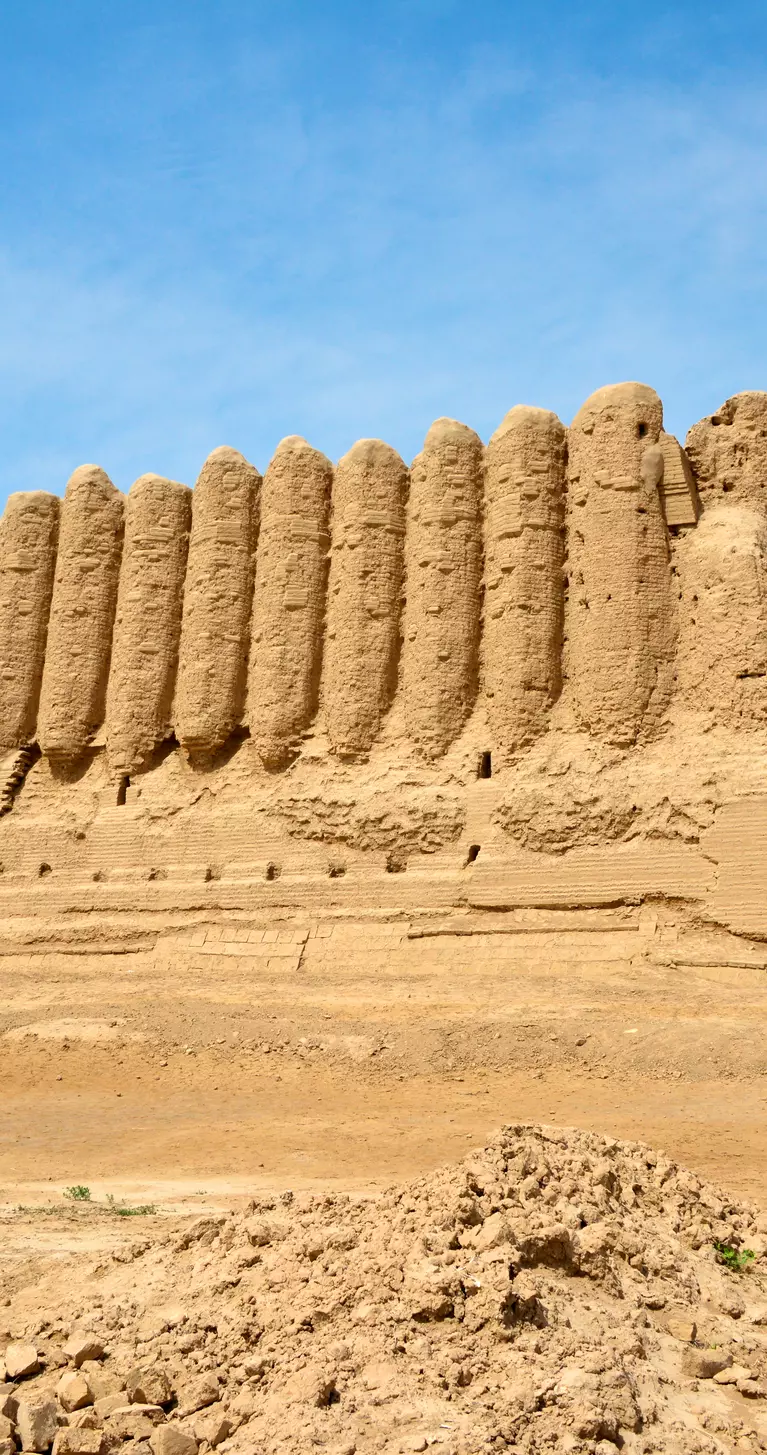Yes. Historically, tourists needed a visa plus a government-approved Letter of Invitation (LOI). In April 2025, a new law introduced electronic visas, aiming to remove the LOI requirement, but implementation details are still rolling out. Until the e-visa is fully live, the Turkmen Embassy in Washington, D.C. continues to state an LOI is required. Passport should have 6 months’ validity. Some border regions also need special permits. Goway can arrange the visa support or e-visa guidance and any regional permits for your itinerary. Check close to departure for the latest rules.
Discover Tailor-Made Turkmenistan Vacations
Ancient Silk Road history and surreal landscapes in Turkmenistan.
Turkmenistan offers striking desert scenery, archaeological treasures, and glimpses of nomadic heritage. From the Darvaza Gas Crater to the ruins of Merv and modern Ashgabat, travellers experience both mystery and history in this Central Asian nation.
Featured Highlights
- See the fiery Darvaza Gas Crater in the Karakum Desert
- Explore the ancient Silk Road ruins of Merv and Konye-Urgench
- Discover Ashgabat’s striking white marble cityscape
- Visit desert fortresses and remote archaeological sites
- Experience traditional bazaars and nomadic culture
- Travel through dramatic desert and mountain scenery
What do Goway's travellers say?

Get to know Turkmenistan before you go.
Best Time to Visit
Turkmenistan is at its most inviting in spring (March to May) and autumn (September to November), when the weather is mild and the landscapes welcoming. These seasons offer comfortable conditions for sightseeing, cultural exploration, and desert adventures, making them the best times to experience the country’s unique blend of history and nature.
Spring brings warm days and the occasional refreshing shower, perfect for wandering Ashgabat’s grand avenues or venturing into the Karakum Desert. The countryside comes alive with blooms, softening the starkness of the steppe and desert.
Autumn offers similar appeal, with gradually cooling temperatures and slightly higher humidity. While the days remain pleasant, nights in the desert can turn chilly, so extra layers are a must if camping beneath the stars.
By contrast, summer (June to August) can be unforgiving. With scorching heat and low humidity, Ashgabat and the desert regions feel parched and challenging for outdoor activities. Winter is equally extreme, with December snowfall and January temperatures regularly dipping below freezing, making travel less comfortable.
For those planning a trip, timing it in spring or autumn ensures the most rewarding experience—when Turkmenistan’s dramatic landscapes and cultural landmarks can be explored in comfort.
What do the experts say?
I love and am always fascinated by Turkmenistan's unique cultural heritage.
You should definitely attend Turkmenistan's annual Melon Day Festival. It's an annual celebration held every year on the second Sunday of August, featuring a large display of the Turkmenistan melon, praised for its massive size, aroma, and delicious taste.
Frequently Asked Questions
Do I need a visa or special permits to enter Turkmenistan?
What language is spoken locally? How widely is English understood in Turkmenistan?
Turkmen is the official language; Russian is still common in cities and for commerce. English is limited outside hotels and with licensed guides, so a few Turkmen or Russian phrases go a long way. Goway trips include English-speaking guides where needed.
What are the must-see attractions in Turkmenistan?
Think surreal and ancient: the white-marble avenues of Ashgabat; the UNESCO-listed ruins of Ancient Merv and the Parthian Fortresses of Nisa; the flame-licked Darvaza Gas Crater in the Karakum Desert; and the striped cliffs of Yangykala Canyon near the Caspian. Time at a horse farm to see Akhal-Teke horses is a highlight on many tours. Goway can weave these into a private Silk Road journey. Note: local reports suggest Darvaza’s flames can vary—ask us for current conditions before planning an overnight camp.
Is Turkmenistan safe? What should I keep in mind while travelling there?
Overall crime against visitors is low, but laws are strict and the state is highly controlled. Avoid photographing government buildings, military sites, or infrastructure; follow local instructions and posted signs. Declare currency on arrival and departure, and expect occasional road checkpoints. Canada advises exercising a high degree of caution; the current U.S. advisory is Level 1 (normal precautions). Always verify advisories before you go. Goway itineraries factor in current guidance and permitted routes.
What’s the best way to travel within Turkmenistan?
Distances are big. Most travellers combine a private driver-guide with short domestic flights on Turkmenistan Airlines linking Ashgabat with Mary, Dashoguz, Türkmenbaşy, Turkmenabat, Kerki, and Balkanabat. Trains exist but are slow and schedules change. For desert areas like Darvaza or Yangykala, 4x4s with experienced drivers are essential—something Goway arranges as part of a tailored itinerary.
What Turkmenistan cultural customs should I be aware of?
Dress modestly; cover shoulders and knees in towns and at religious sites, and women should carry a light scarf for mosques. Ask before taking photos of people. Public smoking is restricted; follow posted rules. Avoid political discussions and be respectful when visiting monuments. Small gestures—learning hello and thank you in Turkmen—are appreciated.
What should I wear/pack for Turkmenistan’s climate?
It’s a desert climate: scorching summers, crisp winters, and brilliant sun year-round. For spring and autumn (the best times to visit), pack breathable layers, a sun hat, sunglasses, high-SPF sunscreen, and a light jacket for cool evenings. In summer, add long, airy UV-protective clothing and extra electrolytes; in winter, bring a warm coat, gloves, and hat, especially for evening walks among ruins. Sturdy closed-toe shoes are ideal for archaeological sites and canyon edges. A refillable bottle and lip balm help in the dry Karakum air.
Unlock more by subscribing to our newsletter
With our newsletter, you’ll get access to regular communications that inspire you and help you explore the world your way
